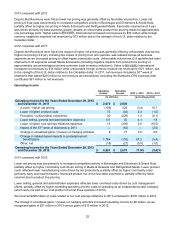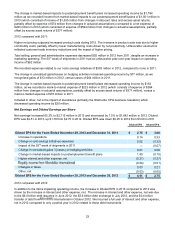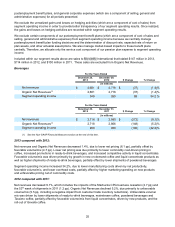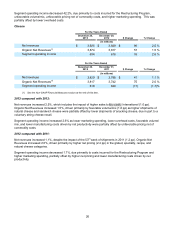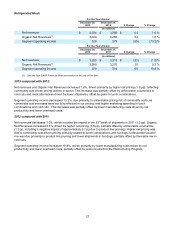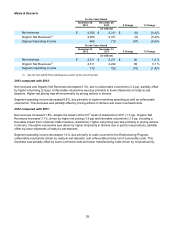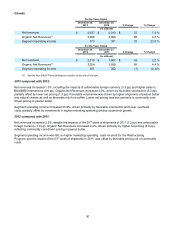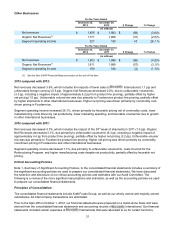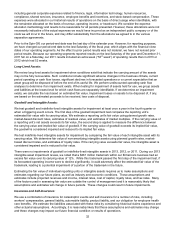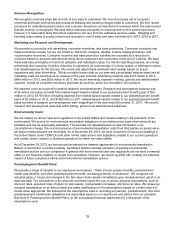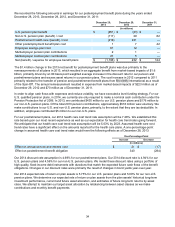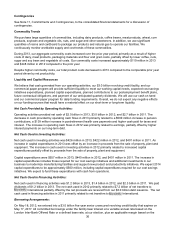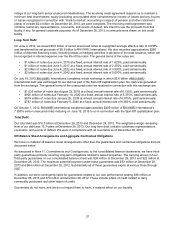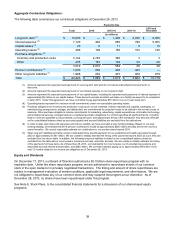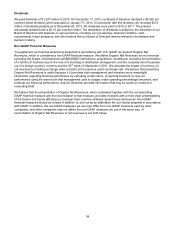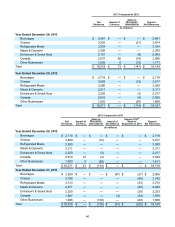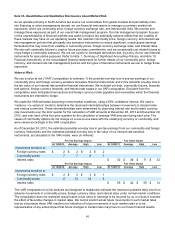Kraft 2013 Annual Report Download - page 34
Download and view the complete annual report
Please find page 34 of the 2013 Kraft annual report below. You can navigate through the pages in the report by either clicking on the pages listed below, or by using the keyword search tool below to find specific information within the annual report.32
including general corporate expenses related to finance, legal, information technology, human resources,
compliance, shared services, insurance, employee benefits and incentives, and stock-based compensation. These
expenses were allocated in our historical results of operations on the basis of direct usage when identifiable, with
the remainder allocated on the basis of revenue, operating income, or headcount. We consider the expense
allocation methodology and results to be reasonable for all periods presented. However, these allocations were not
necessarily indicative of the actual expenses we would have incurred as an independent public company or of the
costs we will incur in the future, and may differ substantially from the allocations we agreed to in the various
separation agreements.
Prior to the Spin-Off, our period-end date was the last day of the calendar year. However, for reporting purposes,
we have changed our period-end date to the last Saturday of the fiscal year, which aligns with the financial close
dates of our operating segments. As the effect to prior period results was not material, we have not revised prior
period results. Because our operating segments reported results on the last Saturday of the year and December 31,
2011 fell on a Saturday, our 2011 results included an extra week (“53rd week”) of operating results than in 2013 or
2012 which had 52 weeks.
Long-Lived Assets:
We review long-lived assets for impairment when conditions exist that indicate the carrying amount of the assets
may not be fully recoverable. Such conditions include significant adverse changes in the business climate, current
period operating or cash flow losses, significant declines in forecasted operations or a current expectation that an
asset group will be disposed of before the end of its useful life. We perform undiscounted operating cash flow
analyses to determine if an impairment exists. When testing for impairment of assets held for use, we group assets
and liabilities at the lowest level for which cash flows are separately identifiable. If we determine an impairment
exists, we calculate the loss based on estimated fair value. Impairment losses on assets to be disposed of, if any,
are based on the estimated proceeds to be received, less costs of disposal.
Goodwill and Intangible Assets:
We test goodwill and indefinite-lived intangible assets for impairment at least once a year in the fourth quarter or
when a triggering event occurs. The first step of the goodwill impairment test compares the reporting unit’s
estimated fair value with its carrying value. We estimate a reporting unit’s fair value using planned growth rates,
market-based discount rates, estimates of residual value, and estimates of market multiples. If the carrying value of
a reporting unit’s net assets exceeds its fair value, the second step is applied to measure the difference between
the carrying value and implied fair value of goodwill. If the carrying value of goodwill exceeds its implied fair value,
the goodwill is considered impaired and reduced to its implied fair value.
We test indefinite-lived intangible assets for impairment by comparing the fair value of each intangible asset with its
carrying value. We determine fair value of non-amortizing intangible assets using planned growth rates, market-
based discount rates, and estimates of royalty rates. If the carrying value exceeds fair value, the intangible asset is
considered impaired and is reduced to fair value.
There were no impairments of goodwill or indefinite-lived intangible assets in 2013, 2012, or 2011. During our 2013
intangible asset impairment review, we noted that a $261 million trademark within our Enhancers business had an
excess fair value over its carrying value of 12%. While this trademark passed the first step of the impairment test, if
its forecasted operating income were to decline significantly, it could adversely affect the estimated fair value of the
trademark, leading to a potential impairment of a portion of the trademark in the future.
Estimating the fair value of individual reporting units or intangible assets requires us to make assumptions and
estimates regarding our future plans, as well as industry and economic conditions. These assumptions and
estimates include projected revenues and income, interest rates, cost of capital, royalty rates, and tax rates. Many
of the factors used in assessing fair value are outside the control of management and it is reasonably likely that
assumptions and estimates will change in future periods. These changes could result in future impairments.
Insurance and Self-Insurance:
We use a combination of insurance for catastrophic events and self-insurance for a number of risks, including
workers' compensation, general liability, automobile liability, product liability, and our obligation for employee health
care benefits. We estimate the liabilities associated with these risks by considering historical claims experience and
other actuarial assumptions. Accordingly, it is reasonably likely that these assumptions and estimates may change
and these changes may impact our future financial condition or results of operations.


